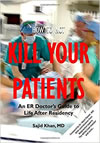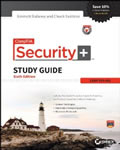All Articles
Accounting
Healthcare Facilities - Hospitals
Alcohol, Tobacco & Other Drugs
Hotels & Hospitality
Anger Management & Related Issues
HVAC - Heating, Ventilation, Air Conditioning
Appraisal & Valuation
Insurance
Banking
International Trade
Blockchain Information
Internet Marketing
Boating
Land Use
Business Consulting
Linguistics
Corrosion
Marine - Maritime
Criminology
Medical Malpractice
Crisis Management
Medical Records Review
Damages
Neuropsychology
Digital / Crypto Currency
Nursing
Digital Forensics
Plastic / Reconstructive / Cosmetic Surgery
Education & Schools
Police Practices & Procedures
Engineering
Product Liability
Enterprise Resource Planning (ERP)
Professional Skills
Feng Shui
Psychology
Finance
Risk Management
Fires & Explosions
Search Engine Optimization (SEO)
Foot / Ankle Surgery
Slip, Trip & Fall
Foreign Affairs - Geopolitics
Speech-Language Pathology
Forgery & Fraud
Supply Chain Management
Gems & Jewelry
Terrorism - Homeland Security
Healthcare
Transportation
More...

BLOCKCHAIN-INFORMATION-RELATED-ARTICLES-PAGE ARTICLES MAIN PAGE
. Contact Us if you are interested in having your work published on our website and linked to your Profile(s).
All Articles
Alcohol, Tobacco & Other Drugs
Land Mapping - Surveying - Zoning
Artificial Intelligence (AI) / Machine Learning (ML)
Linguistics
Bacteria - Fungus - Mold Investigation
Machinery
Blockchain Information
Manufacturing
Boating
Mediation
Business Consulting
Medical - Medicine
Business Management
Medical Records Review
Child Witch Phenomenon
Metallurgy
Construction
Obstetrics - Gynecology (OBGYN)
Corrosion
Oil & Gas
Counseling
Pain Management
Crime Scene Investigation
Patents
Criminology
Plants & Trees
Dental - Dentistry
Politics
Education & Schools
Premises Liability
Elevators - Escalator - Automatic Doors
Product Liability
Employment
Professional Malpractice
Environment
Public Speaking
Expert Witnessing
Search Engine Optimization (SEO)
Eyewitness Testimony
Slip, Trip & Fall
Failure Analysis
Spirituality
Family Issues
Taxation
Healthcare Facilities - Hospitals
Transportation
Intellectual Property
Warnings & Labels
Jails - Prisons - Correctional Facilities
Workplace Violence
More...
Featured Articles
There are no active articles here at this time. Please use the search bar, try another category, or contact us if you would like to contribute an article.
This Article is unavailable. Contact Us
Search articles by title, description, author etc.
Sort Featured Articles
Featured resources
Students with Disabilities and Their...
by Ray Turner, EdD
How to Not Kill Your Patients: An ER...
by Sajid Khan, MD
CompTIA Security+ Study Guide: SY0-401
by Chuck Easttom and Emmett Dulaney
Follow us










